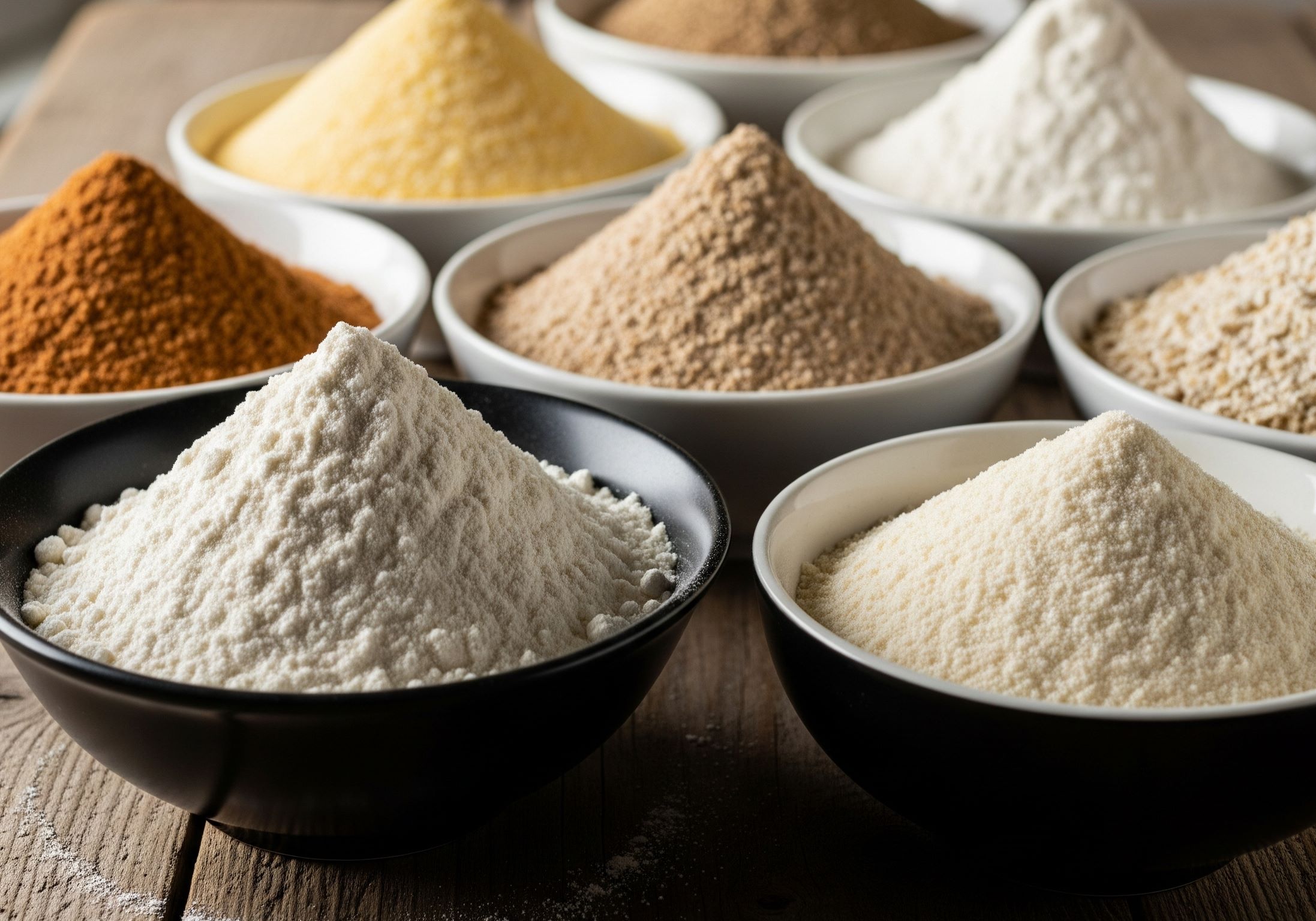A Baker's Guide to Flour Types
Understanding the most important ingredient in your bread.
Walking down the baking aisle can be overwhelming. Bread flour, all-purpose, whole wheat, rye, spelt - what's the difference, and does it really matter? The short answer is yes, it matters a lot. The type of flour you use is the single biggest factor determining the structure, texture, and flavor of your bread. The key difference between them usually comes down to one thing: protein content.

The Role of Protein
When flour is hydrated, two proteins - glutenin and gliadin - link together to form gluten. Higher protein content means a stronger gluten network, which can trap more gas from fermentation. This leads to a chewier loaf with a more open crumb, which is ideal for artisan breads.
Bread Flour (12-14% Protein)
This is the workhorse for most artisan bread recipes. Its high protein content creates a strong, elastic dough that's perfect for developing the structure needed for sourdough. If a recipe calls for "strong" flour, this is what it means.
All-Purpose Flour (10-12% Protein)
As the name suggests, this is a versatile, middle-of-the-road flour. You can absolutely make good bread with it, but the resulting crumb may be a bit softer and less chewy than one made with bread flour. It's a great choice if you're just starting out and only want one type of flour in your pantry.
Whole Wheat Flour (13-14% Protein)
Whole wheat flour contains the entire wheat kernel: the bran, germ, and endosperm. While high in protein, the sharp edges of the bran can cut through developing gluten strands, which can result in a denser loaf. It also absorbs more water, so you may need to increase the hydration of your recipe. It adds a wonderful nutty, complex flavor.
Rye Flour (7-10% Protein)
Rye has a low gluten-forming protein content, making it difficult to create a light, airy loaf using 100% rye. It's famous for its earthy, robust flavor and is typically used in smaller percentages (10-25%) to add flavor complexity to a wheat-based dough. Rye doughs are also notoriously sticky!
Experiment and Blend!
The real fun begins when you start blending flours. Try replacing 15% of your bread flour with rye, or 20% with whole wheat. This is how you create a signature loaf with a unique flavor profile. Just remember that different flours will affect fermentation time and dough feel.
Factor It In with CrumbScience Pro
The CrumbScience Pro engine allows you to specify the percentage of whole grains in your formula, adjusting the fermentation prediction for the unique properties of these flours.
Upgrade to Pro